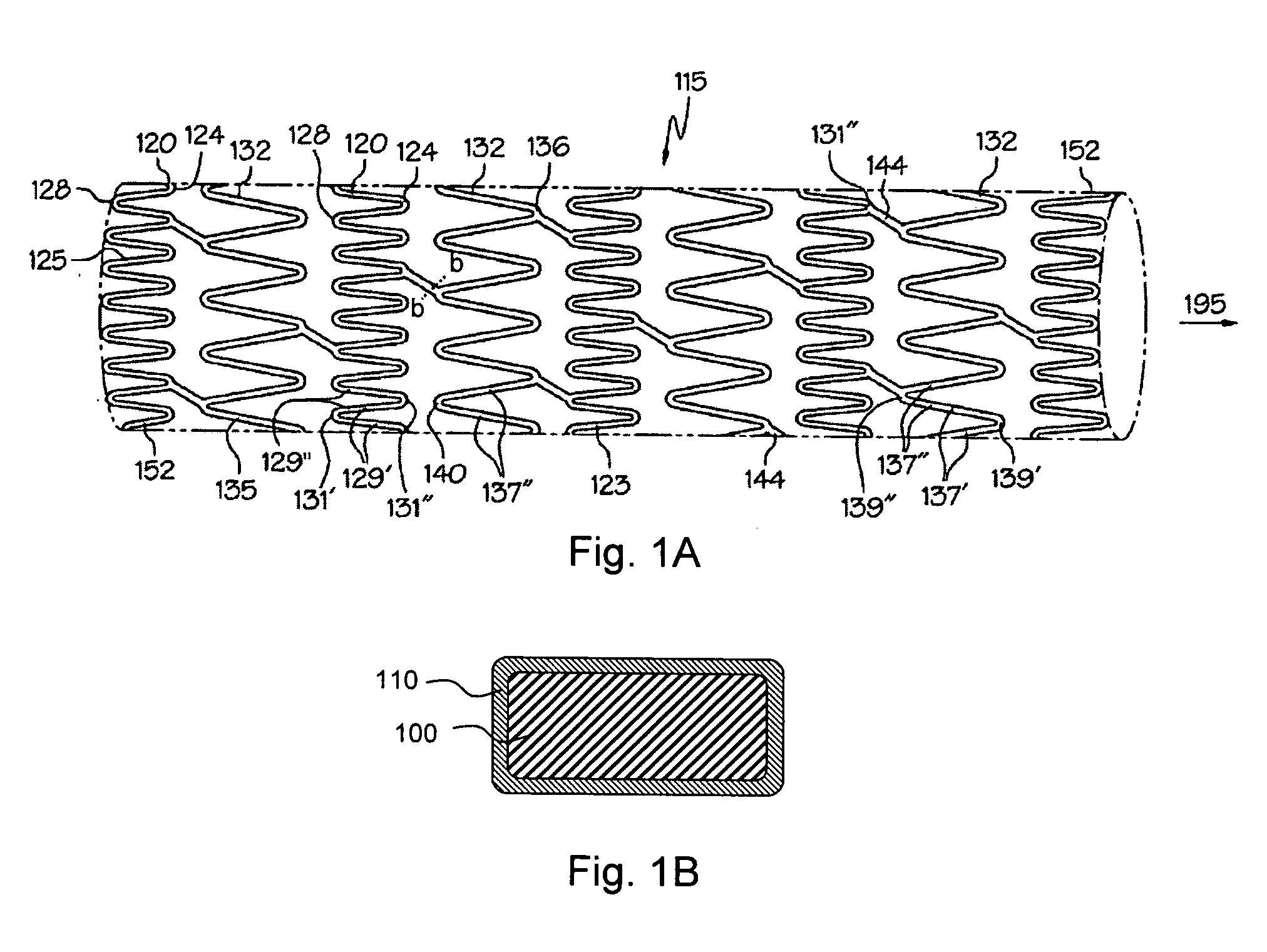Corrosion resistant coatings for biodegradable metallic implants
a biodegradable, coating technology, applied in the field of medical implants, can solve the problems of high corrosion rate of magnesium alloys, and achieve the effect of controlling corrosion ra
- Summary
- Abstract
- Description
- Claims
- Application Information
AI Technical Summary
Benefits of technology
Problems solved by technology
Method used
Image
Examples
Embodiment Construction
[0009] According to an aspect of the invention, implantable medical devices (“implants”) are provided which contain at least one biodegradable metallic region and a polymeric corrosion resistant coating (also referred to herein as “coatings,”“polymeric coatings,”“protective coatings,”“corrosion protective coatings” and the like) over the biodegradable metallic region. The corrosion resistant coating slows the rate of corrosion of the biodegradable metallic region upon implantation into a subject. Preferred subjects into whom the implants of the present invention may be introduced are vertebrate subjects, more preferably mammalian subjects, and even more preferably human subjects.
[0010] At first blush, the use of corrosion resistant coatings for biodegradable metallic regions of implants seems incongruous, because it appears to be antithetical to the goal of having the metallic regions biodegrade (i.e., corrode) in vivo. However, for partially or completely biodegradable implants (e...
PUM
| Property | Measurement | Unit |
|---|---|---|
| Thickness | aaaaa | aaaaa |
| Corrosion properties | aaaaa | aaaaa |
| Electrical conductor | aaaaa | aaaaa |
Abstract
Description
Claims
Application Information
 Login to View More
Login to View More - R&D
- Intellectual Property
- Life Sciences
- Materials
- Tech Scout
- Unparalleled Data Quality
- Higher Quality Content
- 60% Fewer Hallucinations
Browse by: Latest US Patents, China's latest patents, Technical Efficacy Thesaurus, Application Domain, Technology Topic, Popular Technical Reports.
© 2025 PatSnap. All rights reserved.Legal|Privacy policy|Modern Slavery Act Transparency Statement|Sitemap|About US| Contact US: help@patsnap.com

